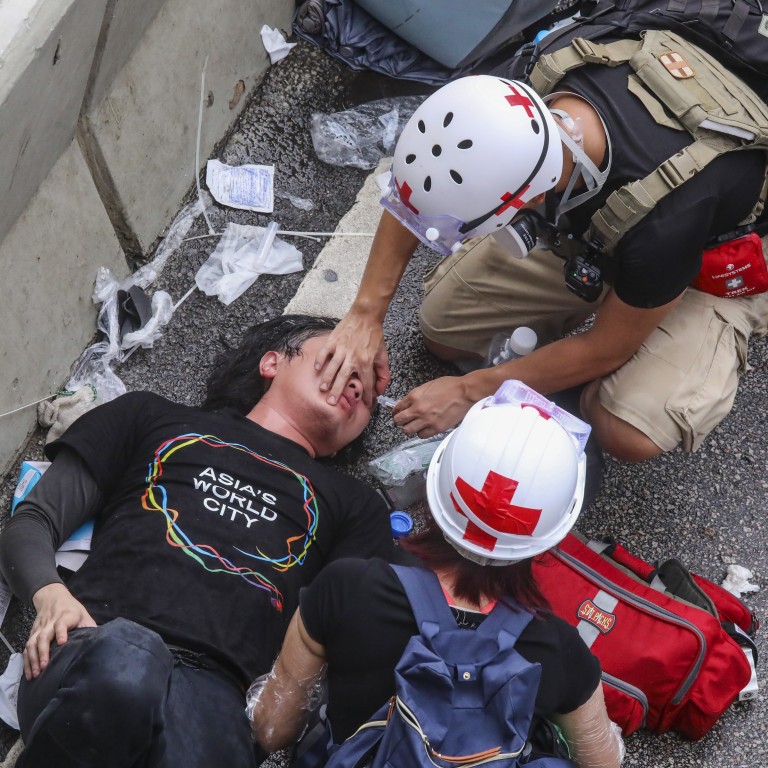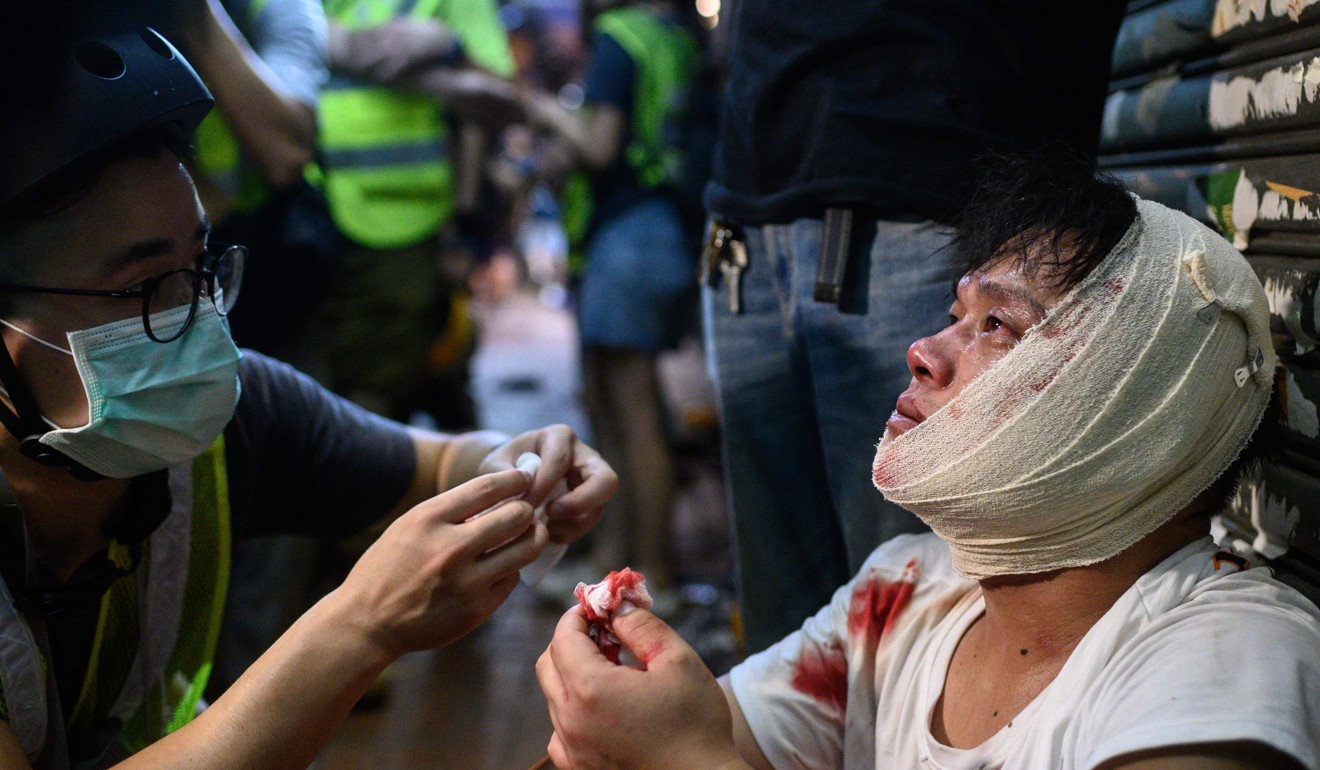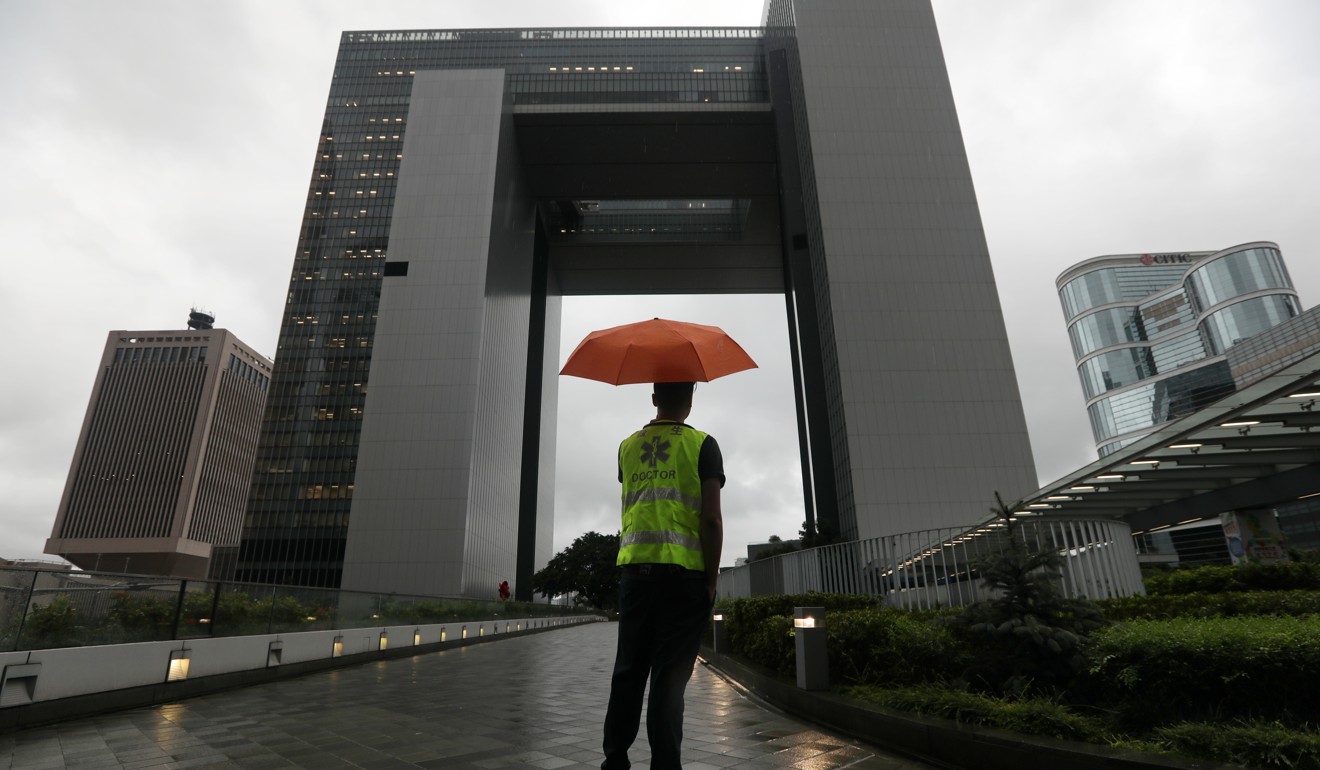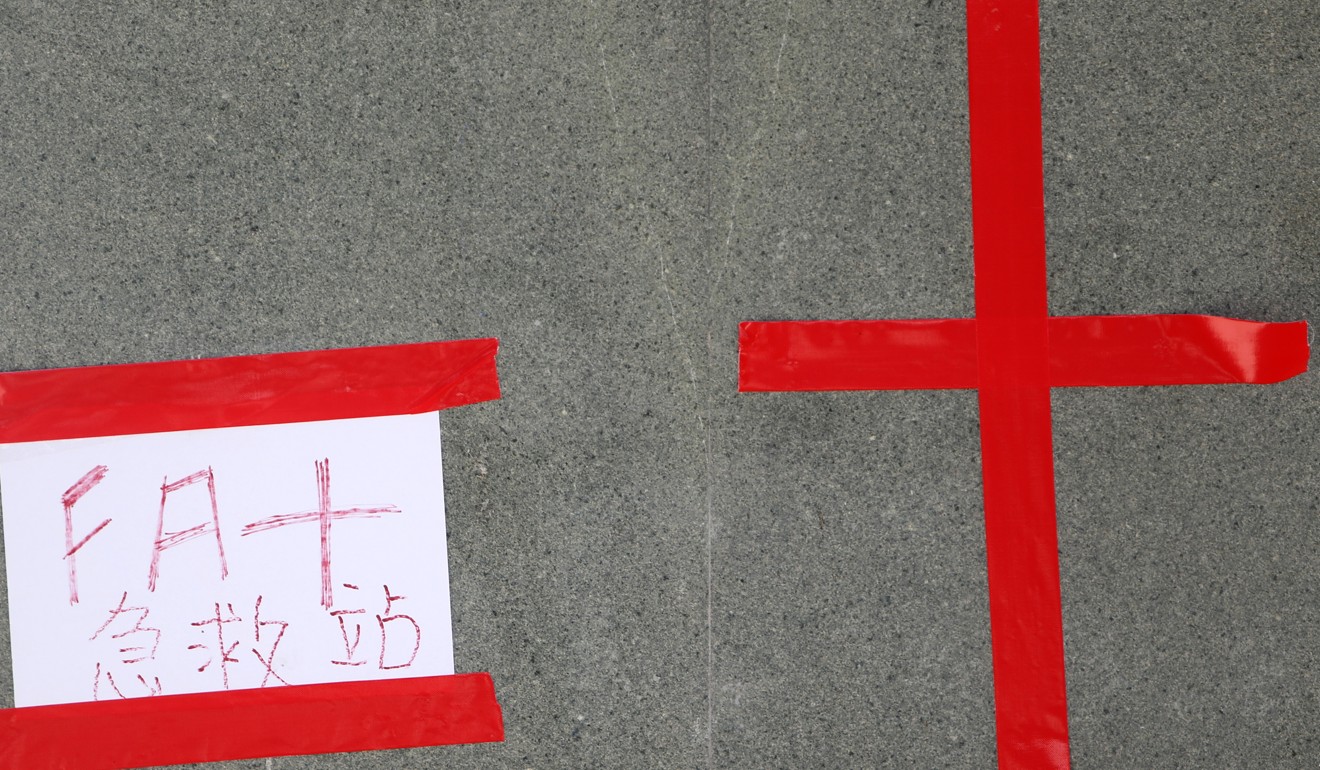
‘Guerilla first aid’: who are the Hong Kong volunteers braving protest chaos to treat the injured?
- Groups and individuals providing scattered help differ from Occupy movement of 2014, when fixed stations and registrations were available
- Challenges faced during treatment include seriously injured people refusing to go to hospital for fear of arrest
Dressed in bright yellow vests, they are seen darting through crowds, going to the aid of injured protesters.
First-aid volunteers have become a common sight on Hong Kong streets over the past two months of protests, standing out from black-clad demonstrators.
Many have crosses on their vests, helmets or backpacks as they dash to those who need help through a fog of tear gas while screams ring out. Sometimes, it is impossible to tell if they are cries for help or just shouts of anger directed at opponents from either side.
The volunteers include doctors, nurses and ordinary people trained to provide first aid.
“I can help the others,” says a first-aider who only wanted to be known by his surname, Ho. “With one more [volunteer] going out, if there is a group of people being tear-gassed, at least there is one more person there to provide immediate help.”
Ho, 28, a public hospital nurse, started volunteering after June 12, when police used tear gas for the first time during the protests.
As anti-government protests have escalated in recent weeks, police have stepped up their use of tear gas and pepper spray to disperse crowds, while protesters have been hurling bricks and other objects, as well as starting fires.

Being a volunteer allows Ho to be part of the protests without causing his family too much worry. “My family would definitely ban me from going to the front line,” he says.
He met other first-aid volunteers through a chat group on the instant messaging app Telegram, and they have begun going to the protests in small teams of four to six.
At the Tseung Kwan O march last Sunday, for example, Ho was with a doctor and two others trained in first aid.
They walked with the marching crowd, keeping a lookout for anyone needing medical attention.
“The routes of protesters have become more unpredictable, so it is not possible for us to be at a fixed station,” Ho says.
The routes of protesters have become more unpredictable, so it is not possible for us to be at a fixed station
Team members must carry all their supplies with them, and he usually has gauze, saline solution and antiseptics with him.
Trouble sleeping
Aside from volunteers working in teams like Ho and his companions, there are also others standing by the roads to offer help if needed, such as handing out sweets for protesters who need a break and an energy boost.
Groups like the St John ambulance brigade and charity Hong Kong Red Cross have also sent out teams, usually stationed at fixed locations.

Volunteers like Ho take care to stay some distance from the points of the most intense clashes, to avoid getting injured.
“The foremost principle in doing first-aid work is taking care of one’s own safety,” Ho says.

But 27-year-old volunteer Ng, who does not want to give his full name, says he tends to work alone, and makes his way through the thick of the action.
“I want to see more,” says the former salesman, who is trained in first aid. “It is more difficult to move around in a team. When I’m alone, I can act quickly and I just have to take care of myself.”
It is more difficult to move around in a team. When I’m alone, I can act quickly and I just have to take care of myself
He carries about 10kg of equipment, including a blood pressure monitor, blood glucose meter, thermometer and dressings for wounds.
He says he has seen people with cuts, burns and shortness of breath, as well as those with irritations caused by tear gas and pepper spray.
Sometimes, he has trouble sleeping afterwards. “There have been too many scenes – of the injured, as well as seeing police scolding people unreasonably,” he says.

‘Guerilla volunteers’
Ng was a first-aid volunteer during 2014’s Occupy movement for greater democracy, when parts of the city were brought to a standstill.
In that episode, first-aid services were coordinated by a centralised medical team led by veteran surgeon Dr Au Yiu-kai, and anyone who wanted to volunteer had to contact the team.
Police warn against revenge violence in Hong Kong’s North Point district
This time, however, there is no individual or organisation leading the first-aid efforts.
“The organisation is more loose and lacks coordination,” Ng says.

Those who wish to help rely mainly on social media to identify groups of volunteers, or simply approach any first-aid team at the protests.
Caduceus Wong (not his real name), a doctor who works in the accident and emergency department of a public hospital, assembled his first-aid team from his social circle of health care professionals as well as volunteers he met during the Occupy movement.

The doctor, who is in his 30s, says volunteers at the current protests have to be more flexible and are handling more serious injuries.
“Most of the Occupy movement was peaceful. I helped in a first-aid station which was at a fixed spot,” he says. “Some elderly people with chronic illnesses would also come over for casual chats or to have their wounds cleaned.
“But this time there have been clashes at every protest. It is so serious that we can’t even set up a fixed station. It is more likely we will have to work like guerillas, carrying all our equipment ourselves.”
It is more likely we will have to work like guerillas, carrying all our equipment ourselves
Escalating violence has also left more people injured. Since the first major protest on June 9 against the extradition bill, 515 people have been injured, according to the Hospital Authority, which manages public hospitals.
The actual number of casualties could well be higher, as both Ng and Wong pointed out there are injured people who do not want to be sent to public hospitals for fear of being identified as protesters.
This fear of public hospitals was sparked by allegations that frontline health care staff had turned protesters in to police, resulting in arrests at hospitals.

“Every injured protester will try to avoid public hospitals if possible,” Wong says.
Ng says that when an injured person refuses hospital treatment, it goes against volunteers’ intention to help. “But there is nothing we can do, as we need to respect the patient’s will,” he adds.
Although volunteers say they are stepping forward out of goodwill and a willingness to help, all three who spoke to the Post refused to reveal their full names.
Two months on, what do Hong Kong protesters really want?
Wong says one concern is that they might face legal risks, as first-aid volunteers are sometimes seen as being on the side of the protesters. A nurse was among 44 people charged with rioting following protests in Central and Western district on Hong Kong Island on July 28.
“The situation in Hong Kong is still developing. It is safe now, but it doesn’t mean it will be the same tomorrow or next week,” Wong says.
For now, the volunteers say they just want to continue helping those in need at protests.
Ng sums it up: “You have to stay neutral as long as you are wearing this vest.”

